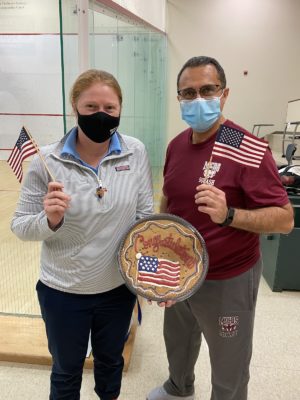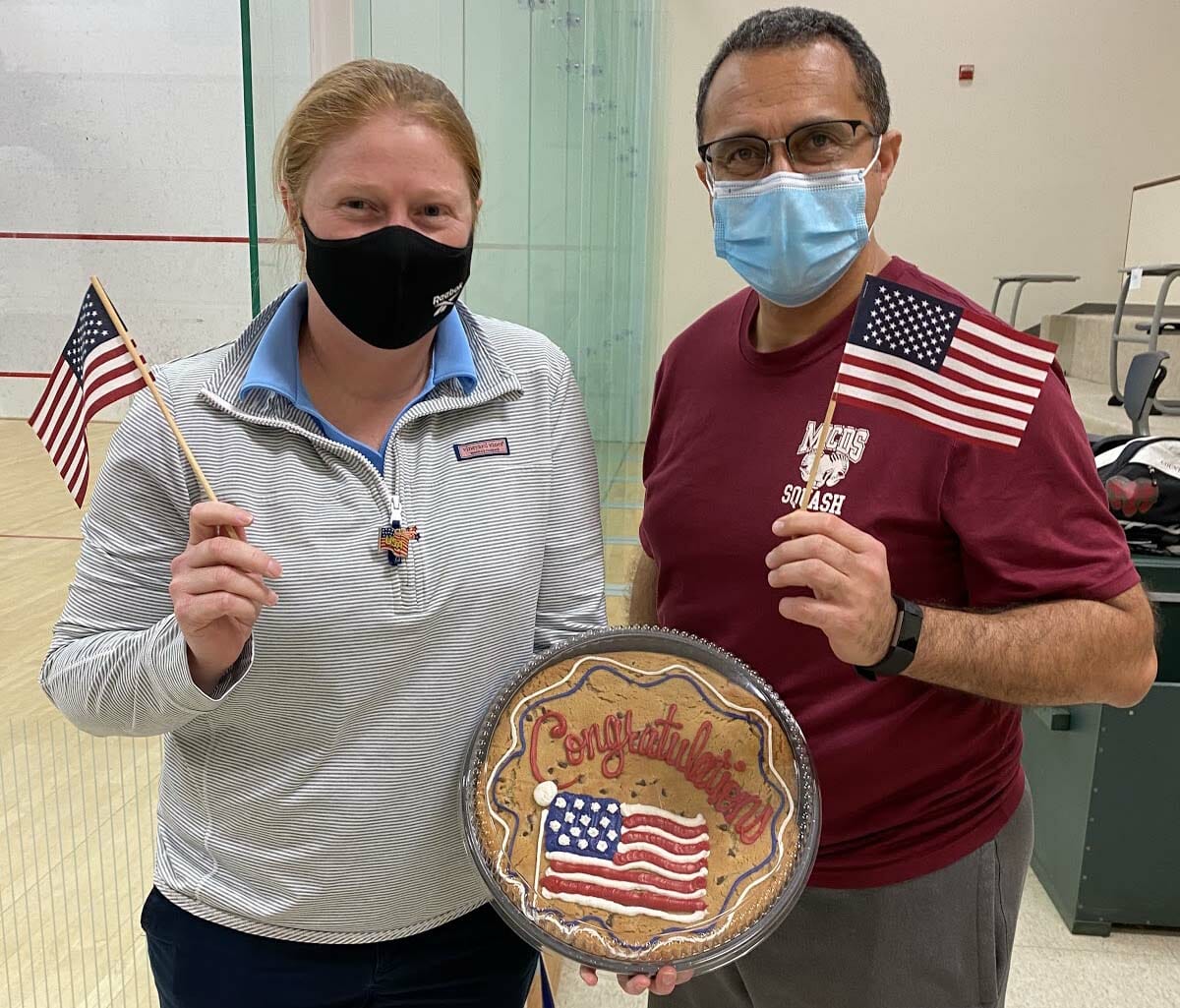Most individuals reading this article have not had to think about the path to citizenship in the United States of America. If you were born here, you likely learned about being an American through family, friends, and history classes in school. For those coming to the United States from another country, there is no “normal path,” so the journey can have many steps and hurdles and become immersive in the final round of citizenship.
The decision to apply for citizenship is significant. One must weigh the benefits that U.S. citizenship offers, such as freedom, voting, and employment, with the responsibilities that all citizens should exercise, such as respecting others’ rights, paying taxes, and defending the country.
For three of our MICDS faculty members, their choice to become U.S. citizens stemmed from a similar theme: a deep appreciation for the opportunities available in the United States.
 Middle School World Languages Teacher Zuowei Chang, who became a U.S. citizen in February 2021, said, “I have been living in the United States for two decades. Originally from China, I first came to study at Columbia University as a graduate student, then moved to St. Louis in 2010 and began working at MICDS as a language teacher. I deeply appreciate all the opportunities this country has offered me. All these years living in this beautiful and lovely country not only opened my mind but shaped the person I am today. It has been a journey of learning: to appreciate, to learn from others, to become a better person, to follow my heart, and always to do what I believe is right.”
Middle School World Languages Teacher Zuowei Chang, who became a U.S. citizen in February 2021, said, “I have been living in the United States for two decades. Originally from China, I first came to study at Columbia University as a graduate student, then moved to St. Louis in 2010 and began working at MICDS as a language teacher. I deeply appreciate all the opportunities this country has offered me. All these years living in this beautiful and lovely country not only opened my mind but shaped the person I am today. It has been a journey of learning: to appreciate, to learn from others, to become a better person, to follow my heart, and always to do what I believe is right.”
 The process of immigration and naturalization has many stages with many forms, fees, and interviews along the way. Middle School Science Teacher Nolan Clarke, originally from Port Elizabeth, South Africa, and the United Kingdom, shared, “I met my now wife, who is American, when I was living in London. We became engaged and moved to St. Louis to be close to her family. After being a permanent resident in the United States for 12 years, I decided it was time to become a citizen as it was the natural next step after being married and having American-born children.”
The process of immigration and naturalization has many stages with many forms, fees, and interviews along the way. Middle School Science Teacher Nolan Clarke, originally from Port Elizabeth, South Africa, and the United Kingdom, shared, “I met my now wife, who is American, when I was living in London. We became engaged and moved to St. Louis to be close to her family. After being a permanent resident in the United States for 12 years, I decided it was time to become a citizen as it was the natural next step after being married and having American-born children.”
On Mr. Clarke’s particular journey, he first entered the country on a fiancé visa. Once he and his wife were married, he applied for a green card. The first two years of having a green card were under conditional provisions, and once the conditional time expired, he was able to apply for permanent residency. After three years of being married, he was eligible for citizenship and held his green card status until his citizenship ceremony in January 2021.
In non-pandemic times, the federal government gives your state of residency the right to perform naturalization ceremonies, usually confirming 50-75 people at a time with family and friends in attendance. However, due to the pandemic, Illinois (where Mr. Clarke resides) is not currently holding ceremonies. His ceremony, limited to 10 people, was administered by an immigration official at the federal building in downtown St. Louis.
 Middle School History Teacher Robyn Williams took a slightly different path. She said, “My journey started in the fall of 2007 when I left Zimbabwe to attend Trinity College in Connecticut. When I graduated from Trinity in 2011, I moved to St. Louis to teach and coach at MICDS. I wanted to become a U.S. citizen because it offers more protections and freedoms than my home country. It’s been a long and stressful journey to become a citizen, but it was absolutely worth it.”
Middle School History Teacher Robyn Williams took a slightly different path. She said, “My journey started in the fall of 2007 when I left Zimbabwe to attend Trinity College in Connecticut. When I graduated from Trinity in 2011, I moved to St. Louis to teach and coach at MICDS. I wanted to become a U.S. citizen because it offers more protections and freedoms than my home country. It’s been a long and stressful journey to become a citizen, but it was absolutely worth it.”
Many MICDS community members helped Williams prepare for her citizenship interview and civics test. In free moments before school, at recess, in advisory, at squash practice, and even passing in the hallways, her 5th grade advisees and students, Girls Squash team, and colleagues quizzed her on the 128 civics exam questions. “It truly felt like a team effort, and I will treasure all those moments where the MICDS community was rooting for me. This helped make my civics test a breeze,” she said.
Like the others, Williams’ ceremony was short and sweet. An official from U.S. Citizenship and Immigration Services (USCIS) read individual names and asked the judge to confirm each person’s status. The judge presiding over the ceremony then led the applicants in the Oath of Allegiance before leading them in the Pledge of Allegiance. Williams remarked, “Our families were not allowed to join us, and there was no live stream available for them to view either. Even with the restrictions in place, it was a really special day.”
When asked how this journey might inform her teaching experience at MICDS, Williams said, “While I am now a U.S. citizen, I feel like I still bring a different perspective to my students who are learning about ancient civilizations or talking about current events. It’s a good reminder that we each have our own story and journey that shapes our worldview, and each story is important to our collective identity. I love telling my students stories of how I grew up in a different country and how life was similar or different from what they know.”
All three faculty members value the kind and congratulatory words, emails, and letters they’ve received since becoming United States citizens. Ms. Williams stated, “Coming back to school the next day, I felt like a rockstar! While my citizenship ceremony was not as celebratory as pre-pandemic ones, the MICDS community helped make my day so special. I will always be grateful for that.”

Curious about the civics exam to become a citizen? Click here to see what’s on the test.
Check out these flashcards to test your knowledge!
View The Citizens Almanac: Fundamental Documents, Symbols, and Anthems of the United States
